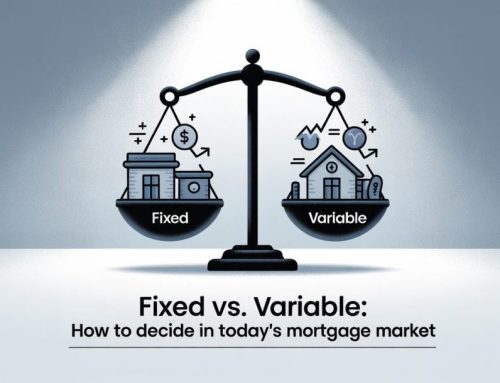There used to be a time when each lender had a single rate for a 5 year fixed mortgage. If someone inquired on the lowest rate, we would simply quote them the lowest rate. In today’s mortgage world, mortgage rate quoting has become more complex. An individual lender could have as many as seven different 5 year fixed mortgage rates, each for a different situation. This is why additional information is required before we can quote you the lowest mortgage rate for your situation.
There are a number of factors that can influence the mortgage rate you are offered:
- Purchase price
- Closing date (either in the future, or in the past).
- Down payment percentage
- Use of property
In order to determine your lowest mortgage rate, we first need to determine which category your mortgage will fall into. There are three possibilities:
- Insured
- Insurable
- Uninsurable
Let’s look at each of the three categories in detail.
INSURED MORTGAGES
Insured mortgages are the easiest to understand. Anytime you are purchasing property with less than 20% down payment, mortgage default insurance will be required from either CMHC, Genworth or Canada Guaranty. As the name implies, the purpose is to protect the lender if the borrower were to default on the loan. The benefit to the home buyer is that it allows them to buy with as little as 5% down payment. Without default insurance, all lenders would require a minimum down payment of 20%, which would put home ownership out of reach for many.
Another benefit is that insured mortgages will often have the lowest mortgage rates. One of the most commonly asked questions is why a borrower with a lower down payment would get rewarded with a lower rate. Logic tells us that a lower down payment would represent a greater risk, therefore requiring a higher mortgage rate. The mortgage industry often defies logic however. Let me explain further.
It really has nothing to do with risk. It has to do with the cost of funds to the mortgage lender. The lower the cost of the funds to the lender, the lower the rate. The higher the cost, the higher the rate. As insured mortgages represent the lowest cost to the lender, they will most often carry the lowest rates.
Whether you’re purchasing a new home, or whether your mortgage was originally insured and you are looking to switch lenders, your mortgage falls into this category.
Does this mean that you should consider taking an insured mortgage to get a lower rate?
Sometimes it makes sense to go with an insured mortgage, and there can be several reasons for doing so. Getting a lower rate is not one of them however. In order to offset the insurance premium, the mortgage rate would need to be roughly 0.70% lower on the insured mortgage… just to break even. You’re never going to see anywhere near that big of a difference in rate. Even if you did, you’re still not coming out ahead. You’re just breaking even. And that is IF you make it to the end of your term without breaking the mortgage. More than 60% of first time homebuyers will end up breaking their mortgage before the end of the term.
INSURABLE MORTGAGES
The next lowest mortgage rate will be found with insurable mortgages. The terminology can definitely get confusing. Insured and insurable sound quite similar, but they have different meanings. An insured mortgage is any mortgage carrying a borrower paid mortgage default insurance premium, as described above. Insurable mortgages do not carry this premium, however the mortgage lender will often insure the mortgage on the back end, which would be at their cost. Even with this added cost to the lender, it lowers their overall cost of funds, which they can then pass on to you with a lower rate.
The insurable category is the most complex of the three. In order for your mortgage to be insurable, it must meet the following criteria:
- Home value must be $999,999.99 or lower
- Amortization cannot exceed 25 years
- Property must be owner occupied
The maximum amortization and usage of the home is fairly straight forward. The maximum home value is straight forward on purchases, but it’s not quite as cut and dry when it comes to currently owned property. Let me explain.
If your home was purchased prior to November 30, 2016, then this rule would not apply. Both your home value and mortgage amount can be over $1 million and you can still be eligible for insurable rates. However, if you refinanced after November 30, 2016, meaning you took a new mortgage for a higher amount, and/or increased your amortization, then your mortgage would no longer qualify as insurable.
Why November 30, 2016?
This is the date new mortgage rules took effect which resulted mortgages being placed into these classifications.
With insurable mortgages, the rate can vary based on your down payment percentage, or by the amount of equity in your home for existing mortgages. The categories are as follows:
- 20 – 24.99% down payment / equity
- 25 – 29.99%
- 30 – 34.99%
- 35% or greater
This is where a greater down payment will have a direct influence on your rate. 35% or greater down payment / equity will often get you the lowest rates. In fact, mortgage rates in this category are very close to the insured rates, if not equal to them.
The highest of the insurable rates will be found in the 20 – 24.99% category, which can be as much as 0.20% higher than rates in the 35% or greater category.
Note that this is not always the case, and there are times when the lowest rates can be found in the 25% or greater category.
Major banks and some credit unions may not use these classifications and may offer the same rate regardless of your down payment / equity percentage. Quite often, there are better mortgage rate deals with lenders who follow this structure.
UNINSURABLE MORTGAGES
An uninsurable mortgage is any mortgage that does not fit within the guidelines of an insured or insurable mortgage. The following criteria applies:
- Home value at $1 million or greater (unless purchased before Nov. 30, 2016).
- Amortization greater than 25 years (maximum 30)
- Rental properties
Uninsurable mortgages will carry higher rates than those in the insured or insurable category. They can however be similar to, or just slightly higher than insurable mortgages with equity / down payment in the 20 – 24.99% range.
Your down payment percentage, or amount of equity in the home does not have any effect on uninsurable mortgage rates. It does not matter if your down payment is 20% or 50%, the same rate will apply. As the cost of funds to the lender does not change based on down payment size, neither does your mortgage rate. As mentioned above, it’s not about risk. It’s about the cost of funds to the lender.
DOES HAVING A HIGH CREDIT SCORE GET YOU A LOWER MORTGAGE RATE?
While it’s good to have a high credit score, this will not have any impact on your rate. In most cases, it doesn’t matter if your score is 650 or if it’s a perfect 900. The rate will be the same. You either qualify or you don’t. There is no in between.
The same applies for income. All a lender needs to see is that your debt to income ratio falls within the allowable guidelines. Those with low debt to income ratios will not get lower rates than those with higher ratios. Just as with credit, you either qualify for the mortgage or you do not. You could be earning $1 million per year and only borrowing $200,000, but this will not have any influence on the mortgage rate offered to you.








Leave A Comment